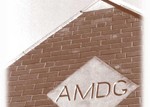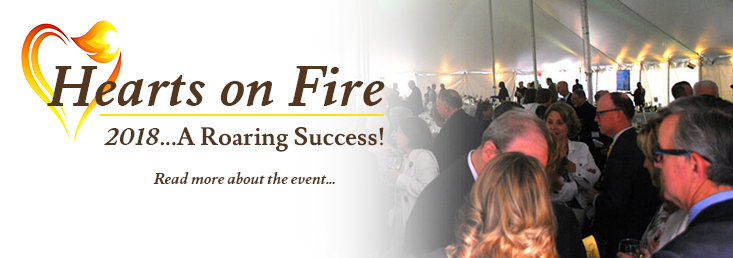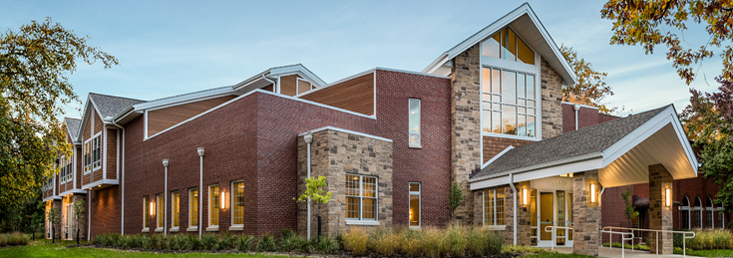History


At the dawn of the nineteenth century, unwelcome in their own homeland, many Jesuits followed other German emigrants to the more welcoming climate of the United States where they established the “Buffalo Mission” of the German Province.
One by one, the immigrant German Fathers established foundations of every sort in the vast area of the Great Lakes and Middle West, among them St. John’s College in Toledo and St. Ignatius College (now St. Ignatius High School and John Carroll University) in Cleveland. St. Ignatius College, founded in 1886, provided the impetus for what was to become the Jesuit Retreat House.
On July 27, 1893, the Jesuits, who administered St. Ignatius College, purchased twenty wooded acres on State Road in what was then called South Brooklyn. Over the next few years, they acquired additional acreage.
By the turn of the century, the Jesuits urgently needed a seminary to house and train young men who were joining them from all parts of the vast territory that was the Buffalo Mission. The property on State Road turned out to be the ideal site where young men could be formed in the tradition of St. Ignatius Loyola, the founder of the Society of Jesus.
In 1898, St. Stanislaus Novitiate opened in a two-and-a-half-story wood frame house. Two years later, a four-story Gothic brick building was constructed by some of the same German Jesuit brothers who built St. Ignatius College on West 30th Street. For a large part of its history, an “army” of Jesuit brothers worked the property, cultivated the grounds, built the shrines and maintained the buildings at St. Stan’s.
On August 15, 1898, Fr. Theodore Van Rossum, S.J., formerly Rector of Canisius College in Buffalo and then Superior of the whole Buffalo Mission, was appointed Rector of St. Stanislaus Novitiate and Master of Novices.
Meanwhile, the ministries of the Buffalo Mission flourished and were increasingly drawn into the mainstream of American life. And so in 1907, the Jesuit Superior General amalgamated the Buffalo Mission with the Jesuit Missouri Province, administered from St. Louis. A practical consequence of this merger was a single novitiate located in Florissant, Missouri. From that time until 1967, St. Stanislaus then served as the sole Tertianship for the Missouri Province (later the Chicago Province and after 1955, the Detroit Province). Fr. Van Rossum remained at St. Stan’s as Tertian Instructor and Retreat Master.
“Tertianship” was the last year of a Jesuit’s formation after ordination. On average, about 40 newly ordained priests came to St. Stan’s each year to make the full Spiritual Exercises of St. Ignatius that lasted thirty days. Eventually Jesuits came to Parma from all parts of the world. In 1938, a young Basque priest, Pedro Arrupe, made his final year of formation at St. Stan’s. Later, while Provincial of Japan, he witnessed the bombing of Nagasaki and from 1965 to 1983, he was Superior General of the Society of Jesus.
From the day St. Stanislaus opened its doors as a seminary, Fr. Van Rossum, a man of foresight and apostolic vision, began to lay the foundations for an outreach work as well. He invited fourteen lay men to the new house to spend three or four days in prayerful retreat and guided experiences designed to exercise the memory, will, understanding and the desires of their hearts. St. Ignatius of Loyola, founder of the Society of Jesus (the Jesuits) developed this regimen and explained it in the book called the Spiritual Exercises as a way to know Jesus Christ more fully, and to love and serve Him by entering into His mission.
On the day their retreat was to begin, only two men actually arrived at the house. Some Jesuits advised Fr. Van Rossum to cancel the retreat. He didn’t. At the end of the 19th Century, retreat houses were unknown. But from that modest beginning with two lay retreatants at the fledgling Jesuit seminary in Parma, Fr. Van Rossum established the lay retreat movement and inaugurated the first retreat house. Until his death on April 29, 1922, he shaped a tradition of weekend retreats and guided its rapid growth. These early retreats generally lasted three or four days and they were silent.
The number of retreats at St Stan’s grew: an estimated 500 men had made retreats by 1912. The property grew as well, up to 79 acres. In 1926 a fire brought about renovation and reconstruction, and 22 acres were sold to pay for it all. Lenten retreats were begun in 1932, and in 1940, three lay men formed the Laymen’s Retreat League of the Diocese of Cleveland to help draw more men from the area into retreats.
This was the first organization of its kind, and the retreat movement grew across the country, with diocesan seminarians and priests joining the laity. By 1943 retreats became a year-round occurrence with over 1,200 men coming each year to St. Stanislaus for a retreat. After World War II, the demand for retreats soared even higher. Fr. Marshall Lochbiler, S.J., oversaw the post-war expansion of the retreat facilities when two wings with private rooms, a chapel, dining room and kitchen were added to the original seminary building.
The “closed,” silent retreat at St. Stan’s was a tradition for generations of St. Ignatius High School students from the 30s through the 60s. By 1969, 1,500 high school students were participating in retreat programs at the retreat house, Today, juniors and seniors from St. Ignatius High School, Padua Franciscan High School and St. John’s Jesuit High School in Toledo make four day Kairos retreats at JRH. Young women from Magnificat High School, St. Augustine and other area schools come to JRH for various renewal programs.
Very early in the history of St. Stan’s, Alcoholics Anonymous was founded in Akron, Ohio. Largely through the efforts of Sister Ignatia, a Sister of Charity of St. Augustine who established Rosary Hall at St. Vincent’s Charity Hospital in Cleveland, retreats for members of AA were held at St. Stan’s. The close tie-in between Ignatian spirituality and l2-Step spirituality were a natural fit and A.A. retreatants helped the retreat house enormously over the years. At least five weekends for A.A. men and two for A.A. women are part of the annual retreat schedule today.
No event since the Reformation has had as profound an effect on the life of the Church as the Second Vatican Council (1962-1965). Proclaiming the universal call to holiness and openness to the Holy Spirit, the Council invited lay men and women to lives of greater involvement in the Church and a life of prayer. The Ignatian spiritual tradition was a richly graced means to develop this invitation. Although initially an exclusively Jesuit endeavor, lay and non-Jesuit associates began to grow in numbers in the years following Vatican II, noticeably during the directorship of Fr. Thomas Gedeon, S.J. (1961-1978). Besides professional lay staff, many volunteers assisted the house ministry.
In 1966, the first Lay Advisory Board was established to help implement changes in the wake of Vatican II. Almost immediately, the Board changed the composition of the retreat house by introducing retreat programs for women in what had previously been an all-male preserve. In 1982, the Advisory Board became a governing Board of Trustees that includes both Jesuits and non-Jesuits and exercises full responsibility for the work of the retreat house.
With the inclusion of women’s retreats, religious women were added to the professional staff. Mrs. Pat Smith served as a trustee and in time she became a retreat director and today continues to offer personally directed retreats.

The house continued its dual function as seminary and retreat house until 1967 when the seminary program moved to Colombiere College in Clarkston, Michigan. In that year, the Board moved to change the name of the house to reflect more appropriately its mission to: the Jesuit Retreat House of Cleveland. In 1974, the old seminary building was razed, but its chapel windows still adorn the Jesuit Retreat House.
The Jesuit Retreat House has been more than an institution in the Cleveland area. Since it opened in 1898, it has been serving people of the Diocese of Cleveland, providing leaders and programs to meet the needs of the times. JRH continues to share the mission of the Society of Jesus, particularly its strong reliance on the tried and true approach of St. Ignatius’ Spiritual Exercises. As it begins its second century, faithful to the original vision of Fr. Van Rossum, the Jesuit Retreat House continues to provide a wide variety of retreat programs that foster personal and spiritual growth in men and women. The Jesuit philosophy of “Finding God in All Things” continues to permeate the work of the Jesuit Retreat House of Cleveland and its holy ground as we begin a new century of service at the dawn of a new millennium. Faithful to its past, JRH faces the challenges of the future with confidence that the Lord will continue to bless its ministry of the Spiritual Exercises of St. Ignatius.





Follow us: